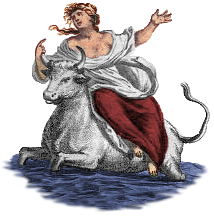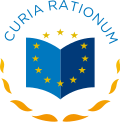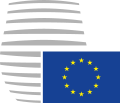Portal:European Union
Introduction
The European Union (EU) is a supranational political and economic union of 27 member states that are located primarily in Europe. The union has a total area of 4,233,255 km2 (1,634,469 sq mi) and an estimated population of over 449 million as of 2024. The EU is often described as a sui generis political entity combining characteristics of both a federation and a confederation. Containing 5.5% of the world population in 2023, EU member states generated a nominal gross domestic product (GDP) of around €17.935 trillion in 2024, accounting for approximately one sixth of global economic output. Its cornerstone, the Customs Union, paved the way to establishing an internal single market based on standardised legal framework and legislation that applies in all member states in those matters, and only those matters, where the states have agreed to act as one. EU policies aim to ensure the free movement of people, goods, services and capital within the internal market; enact legislation in justice and home affairs; and maintain common policies on trade, agriculture, fisheries and regional development. Passport controls have been abolished for travel within the Schengen Area. The eurozone is a group composed of the 20 EU member states that have fully implemented the EU's economic and monetary union and use the euro currency. Through the Common Foreign and Security Policy, the union has developed a role in external relations and defence. It maintains permanent diplomatic missions throughout the world and represents itself at the United Nations, the World Trade Organization, the G7 and the G20. Due to its global influence, the European Union has been described by some scholars as an emerging superpower.[needs update] In 2012, the EU was awarded the Nobel Peace Prize. In 2020, the United Kingdom became the only member state to leave the EU; ten countries are aspiring or negotiating to join it. (Full article...) Selected article The history of Lithuania between 1219 and 1295 deals with the establishment and early history of the first Lithuanian state, the Grand Duchy of Lithuania. The beginning of the 13th century marks the end of the prehistory of Lithuania. From this point on the history of Lithuania is recorded in chronicles, treaties, and other written documents. In 1219, twenty-one Lithuanian dukes signed a peace treaty with Halych-Volhynia. This event is widely accepted as the first proof that the Baltic tribes were uniting and consolidating. Despite continuous warfare with two Christian orders, the Livonian Order and the Teutonic Knights, the Grand Duchy of Lithuania was established and gained some control over the lands of Black Ruthenia, Polatsk, Minsk, and other territories east of modern-day Lithuania that had become weak and vulnerable after the collapse of Kievan Rus'. The first ruler to hold the title of Grand Duke was Mindaugas. Traditionally he is considered the founder of the state, the one who united the Baltic tribes and established the Duchy. Some scholars, however, challenge this perception, arguing that an organized state existed before Mindaugas, possibly as early as 1183. After quelling an internal war with his nephews, Mindaugas was baptized in 1251, and was crowned as King of Lithuania in 1253. Selected picturePhotograph credit: Georgios Giannopoulos The European migrant crisis, also known as the refugee crisis, is a period beginning in 2015 characterised by high numbers of people arriving in the European Union from across the Mediterranean Sea or overland through Southeast Europe following Turkey's migrant crisis. It is part of a pattern of increased immigration to Europe from other continents, which began in the mid-20th century and which has encountered resistance in many European countries.
This picture shows Syrian and Iraqi refugees disembarking a boat upon reaching the coastal waters of the island of Lesbos, Greece, after having crossed the Mytilini Strait from Turkey. They are being assisted by volunteer lifeguards, in yellow and red clothes, from Proactiva Open Arms, a Spanish non-governmental organisation.
Did you know?...that the President of Ireland, who serves as head of state, is elected for a seven year term and can be re-elected only once? ...that within the Eurozone the European Central Bank has the exclusive authority to set monetary policy? Selected cityZagreb is the capital and the largest city of the Croatia. It is located in the northwest of the country, along the Sava river, at the southern slopes of the Medvednica mountain. Zagreb lies at an elevation of approximately 122 m above sea level. In the census of 2011 the population of the city was 790,017. Zagreb is a city with a rich history dating from the Roman times to the present day. The oldest settlement in the urban area of the city is Andautonia, a Roman settlement in the place of today's Ščitarjevo. The name "Zagreb" is mentioned for the first time in 1094 at the founding of the Zagreb diocese of Kaptol, and Zagreb became a free royal town in 1242, whereas the origin of the name still remains a mystery in spite of several theories. In 1851 Zagreb had its first mayor, Janko Kamauf, and in 1945 it was made the capital of Croatia when the demographic boom and the urban sprawl made the city it's known nowadays. General imagesThe following are images from various European Union-related articles on Wikipedia.
TopicsFeatured contentFeatured articles
Featured lists
Featured contentGood articles
CategoriesRelated portalsAssociated WikimediaThe following Wikimedia Foundation sister projects provide more on this subject:
Discover Wikipedia using portals |



































































